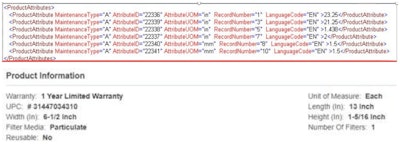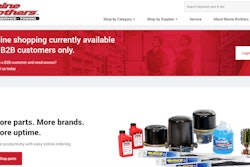

The target audience for the standard includes parts suppliers, aftermarket or OES; third-party product data management firms; distributors; and retailer customers, Andrews says.
“One of the strengths of the independent aftermarket is our access to multiple lines of products and our speed and efficiency in getting those products to our distributors and ultimately to the service providers,” she says. “We play a major role in the movement of goods and services and the speed at which those repairs can be done.”
Facilitating the exchange of product content across the supply chain with PIES is another way to boost the speed of transactions in the independent aftermarket and getting product data information to distributors and ultimately to end users faster and with more comprehensive data, which also reduces return rates. The standard also provides the independent aftermarket a competitive edge against OEM and dealer competition, Andrews says.
“Distributors are really interested in how the standard will ultimately streamline their ability to gain more robust product data information,” Andrews says. “And for distributors that have entered into new areas like private label programs or are branching off and providing new product lines, they’re interested in how it assists them in growing their business and their product line offering.”
Andrews says parts manufacturers and suppliers are most interested in the cost saving to produce their products’ data information and how the standard can increase sales and has the ability to make products top of mind when selling them to distributors and service providers because it digests the information in an easily consumable way, a much needed process in times of e-commerce.
 Above is what the pure Product Attribute database (PAdb) file would look like for a supplier to populate. Below is an example of how that file might translate to catalog or e-commerce site for customers to view. (Click to enlarge.)
Above is what the pure Product Attribute database (PAdb) file would look like for a supplier to populate. Below is an example of how that file might translate to catalog or e-commerce site for customers to view. (Click to enlarge.)Once companies have subscribed to the standard, they convert their existing product data into the PIES standard, which is a normalized set of product data in a particular order. For example, Column A is the major brand, Column B is the sub-brand and all of the remaining columns will be consistent depending on the product line. (See image.)
“You always know the order and what attribute will be requested for a particular product line,” Andrews says. “So it does [require a process to] modify product information to the standard but, ultimately, it streamlines how companies then deliver that content to the rest of the industry and limiting the need for printed catalogs with digitalized data easily translated into online assets for e-commerce platforms.”
She adds, “In order to fully realize the benefits of the standard, it is best used when the whole supply chain is adopting it in a robust way.”
Although PIES has launched, work continues as HDDA continues to add product attribute information to the database for the 20 product categories. The annual subscription rate is a sliding scale based on annual company sales, with special rates for Auto Care membership, which includes additional benefits.
“New subscribers have an opportunity to phase into using the standard across the product categories, relieving the strain of transitioning multiple product lines into standard conformance,” Andrews says.
HDDA also is working on the Aftermarket Catalog Exchange Standard (ACES) to provide users more application information for the truck parts.
“Now that we have a robust movement on describing what your product is, we’re also working with subject matter experts and industry teams to build out a vehicle configuration database on the ACES side,” Andrews says.
Part 2 of the heavy-duty data standard takes a look at why aftermarket distributors and suppliers have gotten involved with the initiative. The story will appear in the April 20 edition of the Trucks, Parts, Service (TPS) newsletter.











